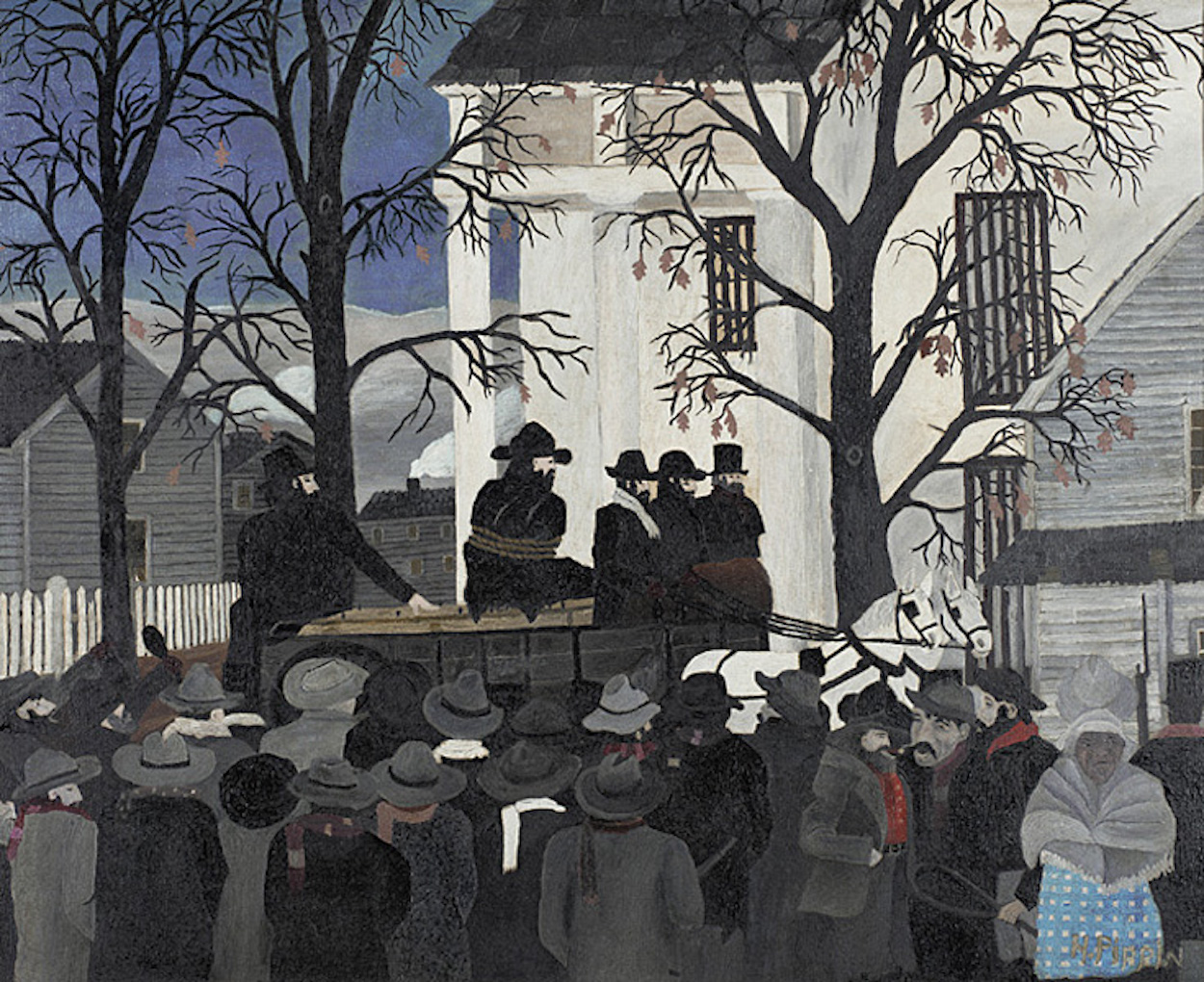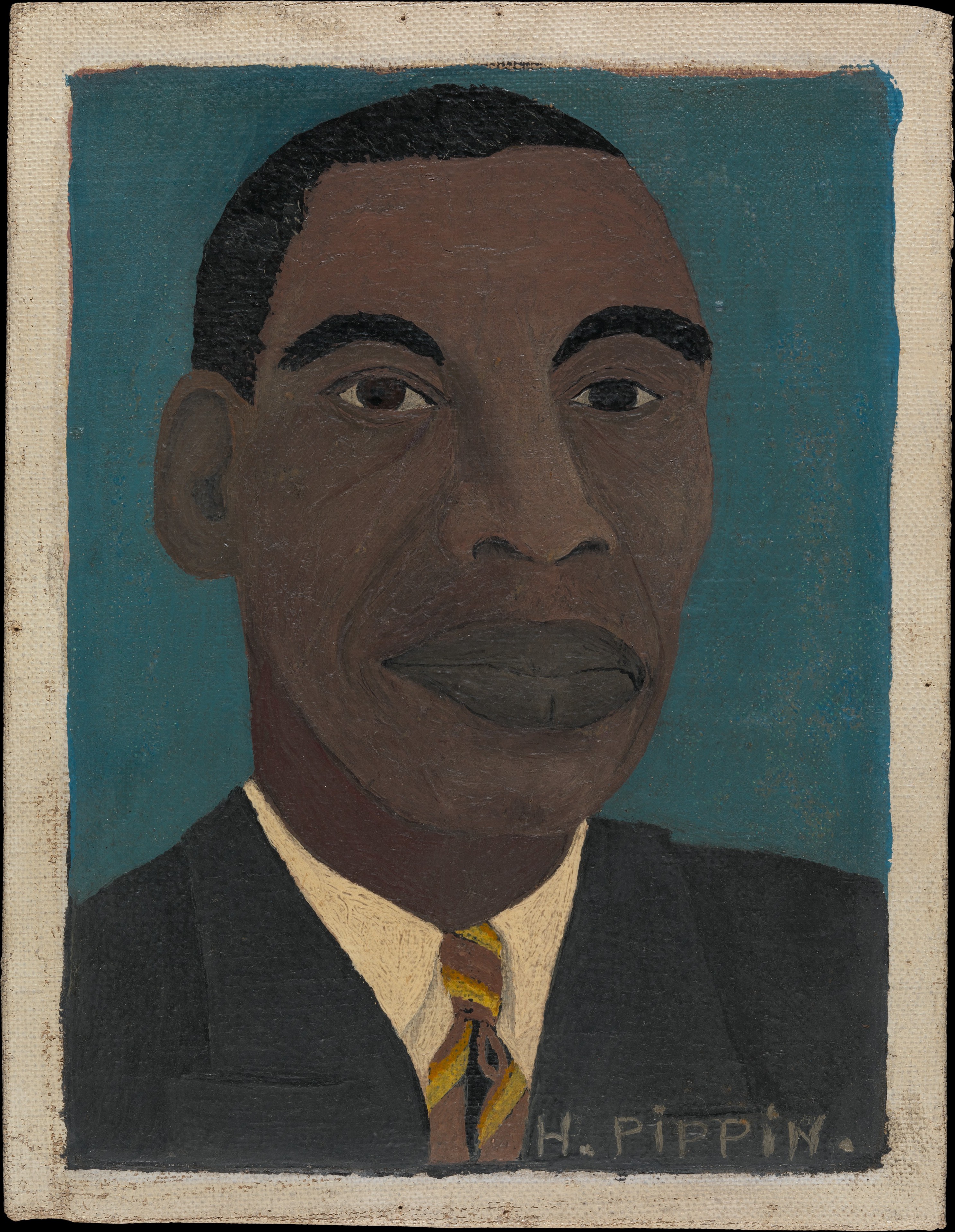This scene of historical significance has a personal connection to the artist. One of Horace Pippin's most famous paintings, it depicts John Brown, an important figure in American history, on the way to his public execution. A white man who was a staunch opponent to slavery, Brown believed that armed rebellion was the only means to overthrow the institution. He and his followers led a raid on the federal armory in Harpers Ferry, Virginia on this date in 1859 with the intention of arming slaves with weapons. Brown's plan failed and he was captured and tried for treason, murder, and slave insurrection. He was found guilty on all counts and hanged six weeks later, sixteen months before the start of the Civil War.
According to family lore, Pippin's grandmother was present at John Brown's hanging. In her light blue dress, she stands out against the sea of somberly dressed male bystanders. By including her, the only black figure in the painting, Pippin emphasizes his personal tie to Brown's legacy. Unlike the other onlookers who nearly all are turned toward the wagon carrying the prisoner, his grandmother turns away, refusing to participate in the spectacle, and faces the viewer, scowling.
Horace Pippin was a self-taught African American artist from Pennsylvania whose success came later in life. He began painting as therapy for a devastating injury sustained in World War I. His style is characterized as primitive or naive, not as a term of disrespect but rather because of his simplified figures and flat representation. Pippin toiled for nearly a decade without any recognition until he was befriended and mentored by Philadelphia art dealer, Robert Carlin. Within a year, his works were being exhibited across the country. Carlin encouraged the artist to research historical figures, which led to Pippin's multiple portrayals of Abraham Lincoln and John Brown. In addition to historical depictions, Pippin's paintings ranged from stark images of war to tranquil interiors and scenes of everyday life drawn from his childhood.
- Martina Keogan
P.S. Read here how art saved the life of Horace Pippin!


 Horace Pippin
Horace Pippin